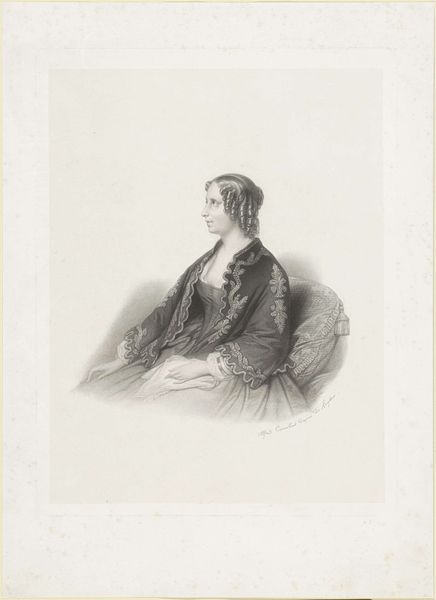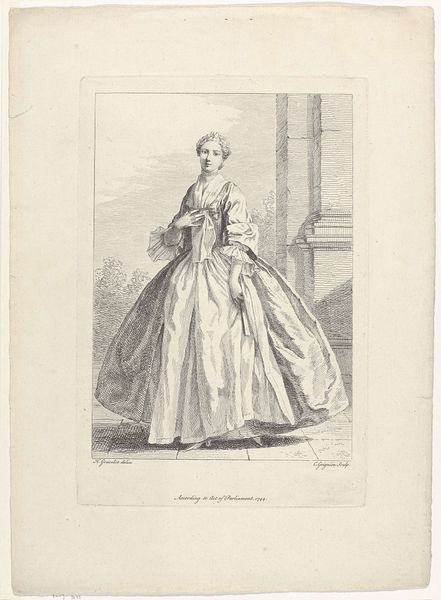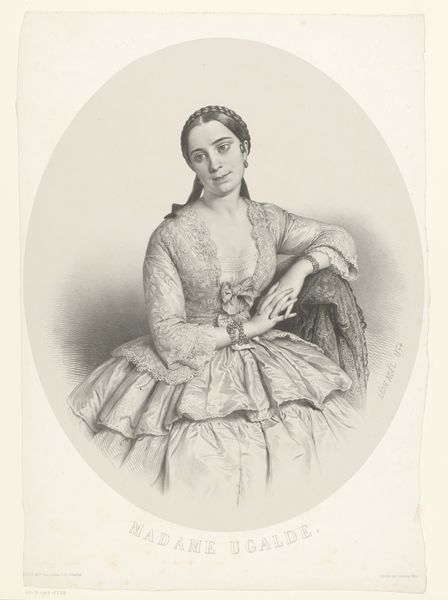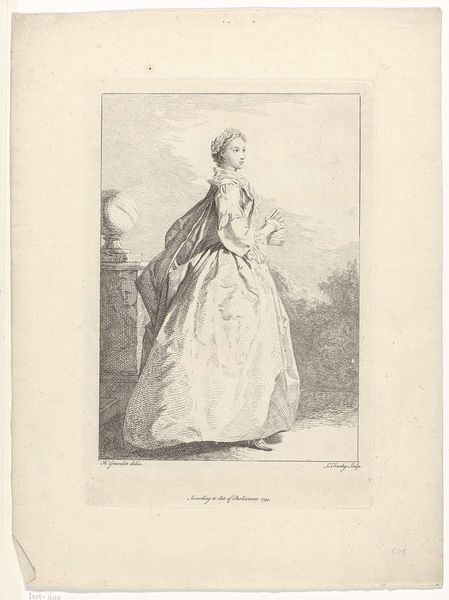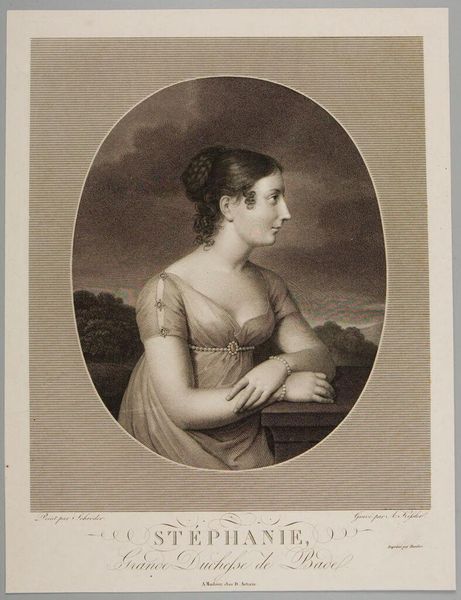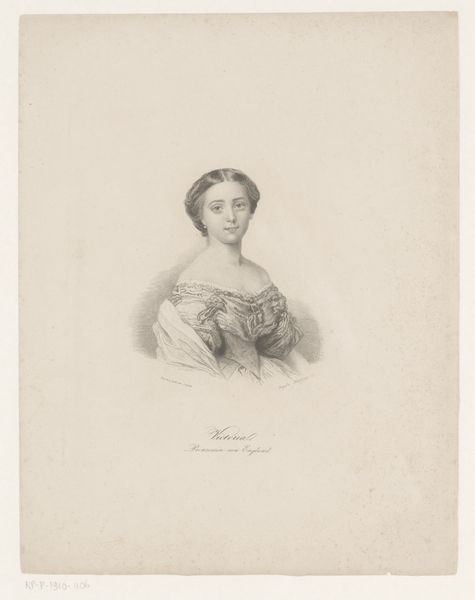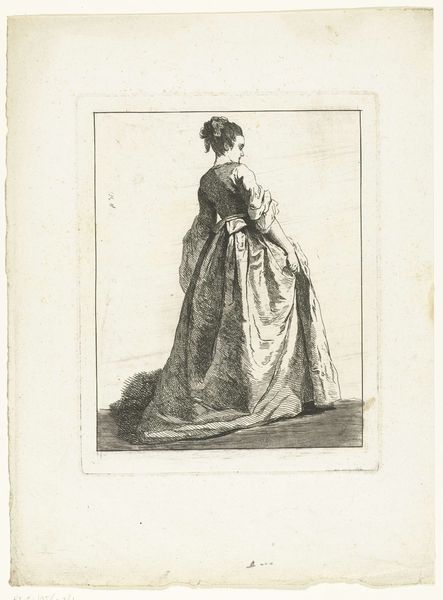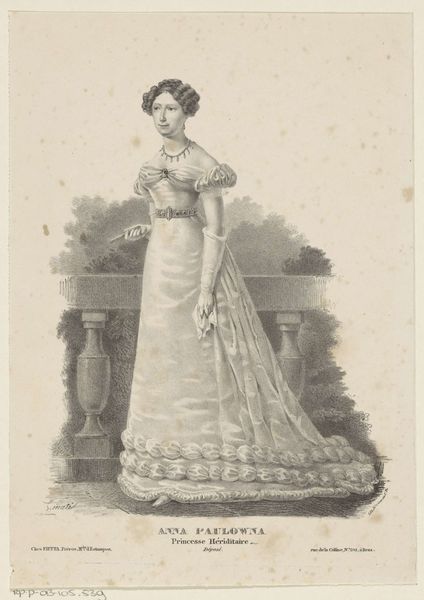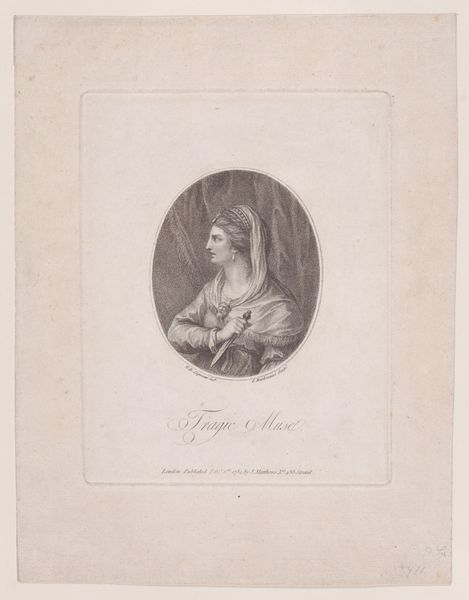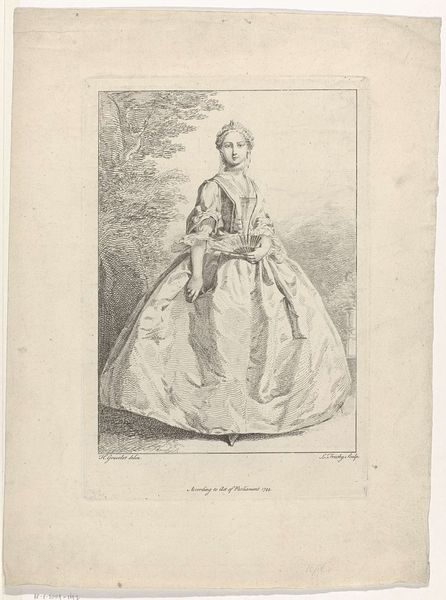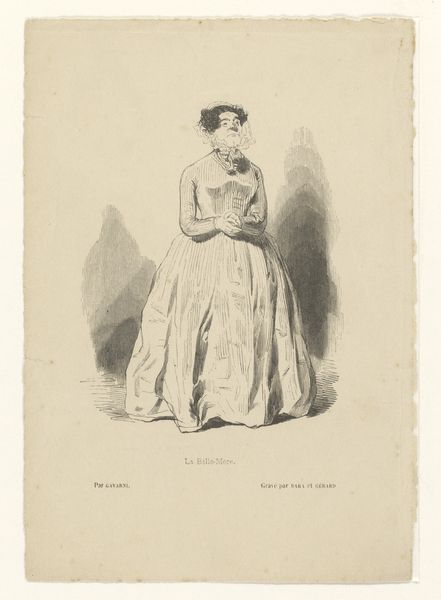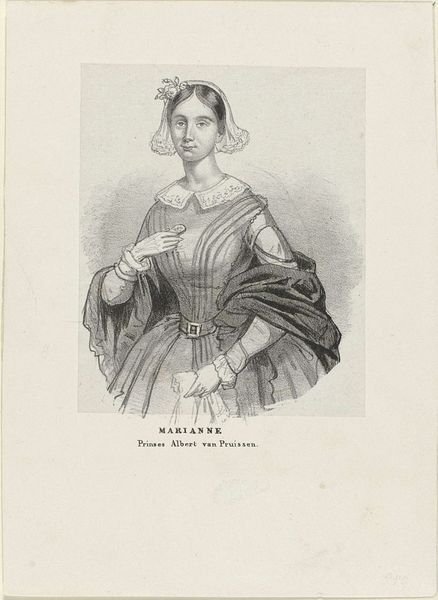
drawing, print, engraving
#
portrait
#
pencil drawn
#
drawing
# print
#
figuration
#
pencil drawing
#
romanticism
#
engraving
Dimensions: height 175 mm, width 115 mm
Copyright: Rijks Museum: Open Domain
Curator: What strikes you first about this engraving, Editor? It's called "Jonge vrouw in bruidsjapon," or "Young Woman in a Wedding Dress," created sometime between 1837 and 1854 by Willem Frederik Wehmeyer. Editor: Oh, there's such a wistful vulnerability. It feels almost stolen, like a private moment caught on the page, you know? She's not directly engaging with us, is she? Curator: Indeed. It's that averted gaze, typical of Romantic portraiture, which lends the scene an air of intimacy and contemplation. Wehmeyer understood the symbolic language of gesture and drapery quite well. Notice how the veil both conceals and reveals, playing with notions of modesty and anticipation. Editor: That veil! It’s so diaphanous. It's fascinating how something that’s meant to suggest purity or even containment can also whisper of freedom and something just beyond grasp. Is she nervous, excited, trapped, hopeful... or maybe, a little bit of everything? Curator: Precisely! The image becomes a repository for a range of emotional interpretations precisely because it leaves so much unsaid. This was part of the intention. Artists in the Romantic period were invested in portraying inner psychological states through external visual cues. Editor: So she's more symbol than woman, in a way? Which got me thinking: what are bridal dresses *really* for? Public performance, family legacy, self-actualization…? There's such a complex interplay of ideas around them. Curator: They are inherently ritualistic, Editor. Think about how throughout history, bridal garments carry the weight of societal expectations and cultural memory. Color, fabric, embellishments… all communicate status, virtue, and family history. Wehmeyer plays with these ideas in a subtle way by placing the figure off-center, creating a sense of imbalance that invites inquiry. Editor: Imbalance… I love that read. I almost wish it weren’t framed so neatly in the oval. I just want her to step right out of it. Curator: Perhaps that yearning for release is precisely the emotional resonance Wehmeyer hoped to inspire. He was quite attuned to the aesthetic and symbolic currents of his era. Editor: It does invite contemplation, a kind of suspended narrative. Well, thanks for shining a light on the complexities here. Curator: And thank you, Editor, for that intuitive and beautifully worded response!
Comments
No comments
Be the first to comment and join the conversation on the ultimate creative platform.
